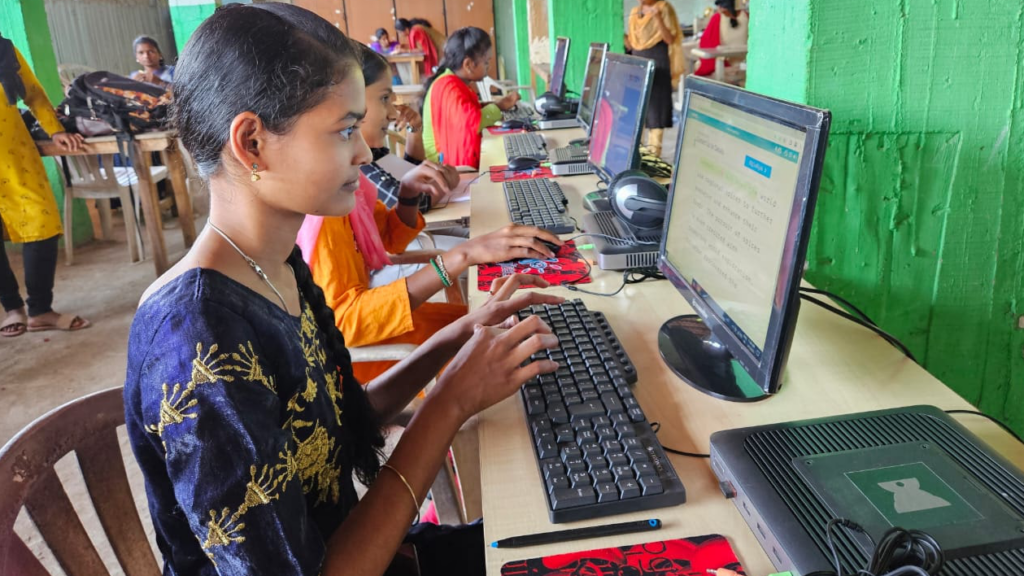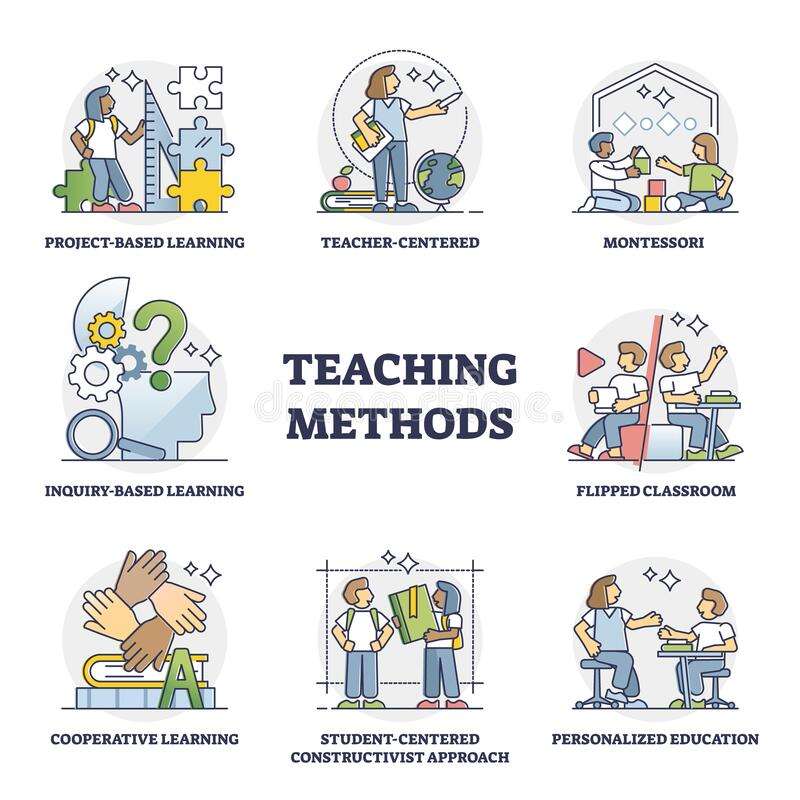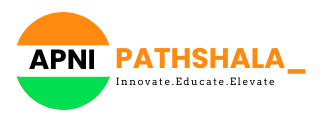How Technology Makes Microschools Better for Students?

What if school didn’t feel like a lame experience? What if your child’s learning journey was as unique as they are? What if they got personalized attention and the power of technology to support their growth? Well, no more what ifs- Welcome to the world of technology and microschools! Here education is not limited to mere textbooks, rigid curriculum and four walls. It’s much much more than that! If you, as a parent, think that technology is an evil- this article will surely change your mind. We are going to explore how technology is bringing a positive change in microschools, making them the ideal environment for today’s learners. Also, how platforms like ApniPathshala are paving the way for this exciting shift. Microschools Explained: Why They Matter in Modern Education Microschools are small, community-based schools that focus on personalized learning. Unlike traditional classrooms, where one teacher may have dozens of students, microschools have smaller groups, allowing for more individual attention. Why do they matter? How technology makes microschools better? a. Customized Learning Plans with AI One of the biggest advantages technology brings to microschools is Artificial Intelligence (AI). You cannot escape from artificial intelligence! AI tools like adaptive learning software can assess each student’s strengths and weaknesses. This allows platforms like Khan Academy or IXL Learning to create personalized learning pathways. The result? Students don’t just consume content, they understand and learn at their own pace, with content that matches their level of understanding. b. Virtual Reality (VR) for better learning experience Imagine being able to explore ancient Egypt or walk through the Great Wall of China, all from your classroom. Fascinating, right? With Virtual Reality (VR), students can experience history, science, and even art in a way that textbooks alone can’t offer. VR brings subjects to life, making learning an unforgettable experience. c. Collaborative Tools for Better Engagement In a microschool, students, teachers, and even parents are part of a community. Platforms like Google Classroom and Slack help strengthen this community by making collaboration easier than ever. With these tools, students can easily work together on group projects, and parents can stay involved in their child’s learning journey. d. Data Analytics for Student Insights Another use of technology in microschooling is using data and then analysing it to make better plans. Data analytics helps microschools track students’ progress accurately. By collecting data on how students are performing, tools can identify patterns, like which areas they struggle with most. Teachers can then use this data to adjust their approach and offer support where it’s needed most. e. Gamification to Make Learning Fun What if learning could feel like a game? Thanks to gamification, technology is turning education into an engaging and fun experience. By adding elements like point systems, levels, and challenges, microschools can make subjects more interactive and enjoyable. Platforms like Kahoot use games to motivate students to participate actively, reinforcing lessons in a fun, competitive way. Impact of technology driven microschools for students You read about how technology is integrated in microschools, now have a look at how it benefits the kids in detail! Boosts Engagement and Motivation Technology has the power to make learning more engaging. With interactive apps, games, and multimedia content, students are more likely to stay interested and motivated. These tools not only capture their attention but also make learning enjoyable. Promotes Self-Paced Learning One of the biggest benefits of technology in microschools is the ability to learn at your own pace. Unlike traditional classrooms, where students are forced to move at the same speed, technology allows learners to progress as they learn concepts. This builds confidence, as students can take the time they need to fully understand a topic, without feeling rushed or falling behind. Improves Critical Thinking Skills Coming to the third advantage, technology helps students develop critical thinking skills by providing access to tools that encourage problem-solving. Virtual labs, interactive lessons, and real-world scenarios allow students to explore subjects deeply, improving their decision-making and analytical skills. These are crucial skills they’ll carry into adulthood, whether they’re solving complex problems at work or tackling daily challenges. Bridges the Accessibility Gap No matter where students live, technology can bridge the education gap. Online platforms, digital textbooks, and virtual labs make high-quality learning accessible to everyone—whether they’re in remote villages or busy cities. This ensures that every student, no matter their location, has the same learning opportunities. Overcoming Microschool Challenges with Technology Lack of Resources in Remote Areas Solution:Platforms like ApniPathshala and BeyondExams make educational resources accessible to students everywhere. Students can access everything they need, from textbooks to lessons, right from their devices, overcoming the lack of physical resources. Parental Concerns About Screen Time Solution:Many parents worry about screen time, but tech tools balance digital learning with offline activities. Time management features allow parents and teachers to regulate screen time, ensuring students engage in both digital and real world learning. Teacher Training Gaps Solution:Teachers may not always be familiar with the latest tech, but online training programs help them develop the skills needed to integrate new tools into their classrooms. These modules ensure teachers can use technology effectively, offering the best learning experience to students. How can ApniPathshala empower microschools? At ApniPathshala, we believe in the power of microschools to transform education. Our mission is to help passionate individuals like you bring this vision to life. Whether you’re a teacher with years of experience or a parent wanting to make a difference, we’re here to guide you every step of the way. For instance, we have helped and empowered various learning pods and microschools by providing them necessary resources- personal computers for students, learning materials, syllabus as per latest trends, platform to expand their reach etc. As the education sector grows, microschools with advanced technology aren’t just a trend—they’re the future.Ready to transform education in your community? Start your own microschool with ApniPathshala’s expert guidance and support. Let’s make a meaningful impact together – Get in touch today!
10 Best Learning Methods To Maximize Kids’ Growth

Community-based learning pods are revolutionizing education by offering a unique and dynamic learning environment. Unlike traditional schools, pods can tailor their approach to each student, fostering a love of learning and maximizing their potential. This blog explores ten powerful teaching methods that can be implemented in your learning pod: 1. Flipped Classrooms: Learning at Your Own Pace Forget the one-size-fits-all approach! Flipped classrooms empower students to learn foundational concepts at home using online resources. This frees up class time for in-depth discussions, problem-solving activities, and personalized support. 2. Game On! Engaging with Educational Games Learning doesn’t have to be a chore. Educational games tap into students’ natural love of play, using competition, rewards, and interactive elements to solidify concepts and boost engagement. 3. Putting Students in Charge: Student-Centered Learning Student-centered learning empowers students to take ownership of their education. By fostering exploration of personal interests and connecting them to broader subjects, this approach ignites curiosity and a deeper understanding. 4. Spark Curiosity: Inquiry-Based Learning Inquiry-based learning encourages critical thinking by posing open-ended questions and challenging students to find their own solutions. This approach fosters independent thought, research skills, and a love for discovery. 5. Learning by Doing: Project-Based Learning Project-based learning goes beyond textbooks. Students tackle real-world problems, developing critical thinking, collaboration, and interdisciplinary skills that will serve them throughout their lives. Problem-Based Learning: A Challenge to Conquer Similar to project-based learning, problem-based learning throws students headfirst into a challenge before any instruction begins. This sparks curiosity and encourages research as they find solutions on their own. 7. The Power of Discussion: Discussion-Based Learning Learning thrives on interaction. Discussion-based learning encourages collaboration and critical thinking as students explore topics from different perspectives. It hones communication skills and promotes independent learning. 8. Learning Through Play: Play-Based Learning for Young Minds Play isn’t just fun; it’s essential for young learners! Play-based learning allows students to develop social skills, explore their curiosity, and build a strong foundation for future academic success. 9. Service Learning: Making a Difference in the Community Service learning blends classroom learning with real-world volunteer work. By tackling community issues, students gain practical experience, develop empathy, and see how academic concepts can make a positive impact. 10. Social-Emotional Learning: Building Well-Rounded Individuals Social-emotional learning (SEL) equips students with the skills they need to navigate both academic and personal challenges. It focuses on self-awareness, emotional regulation, and relationship building, fostering well-rounded individuals prepared for future success. By incorporating these diverse teaching methods, community learning pods can create a dynamic and stimulating learning environment that caters to every student’s unique needs and learning styles. Let’s unleash the potential within each student and foster a lifelong love of learning! Frequently Asked Questions What is a flipped classroom? In a flipped classroom, students learn foundational concepts at home using online resources or other materials. Class time is then used for more in-depth discussions, problem-solving activities, and personalized support. What are the benefits of game-based learning? Educational games can make learning more engaging and interactive, helping students retain information better. They can also promote critical thinking, problem-solving, and healthy competition. How does student-centered learning work? Student-centered learning focuses on the interests and needs of each student. Teachers provide resources and guidance, but students have more autonomy over their learning journey, allowing them to explore topics that spark their curiosity. What is the difference between project-based and problem-based learning? Both methods involve students working on a real-world challenge. Project-based learning often starts with a clear goal or question, while problem-based learning throws students headfirst into a challenge before providing instruction. How can I find resources for these teaching methods? Many online resources and educational organizations offer support and guidance for implementing these teaching methods. Additionally, teacher communities and education conferences can be valuable sources of information. What are the challenges of implementing these methods? Some teaching methods may require additional planning and preparation from teachers. Additionally, creating a supportive and collaborative learning environment is crucial for success. Conclusion:Unleashing Potential and Igniting a Passion for Learning Community learning pods offer a unique opportunity to revolutionize education. By implementing these ten powerful teaching methods, you can create a dynamic and engaging learning environment that caters to each student’s individual needs and learning styles. From the personalized approach of flipped classrooms to the collaborative spirit of discussion-based learning, these methods foster a deeper understanding, critical thinking skills, and a love of learning that will stay with students throughout their lives.Remember, the ultimate goal is to empower students to take charge of their education, explore their passions, and develop the well-rounded skills they need to thrive in the real world. So, embrace the flexibility of community learning pods, unleash the potential within your students, and ignite a lifelong passion for learning together! Developed by Pranav Gorathe
